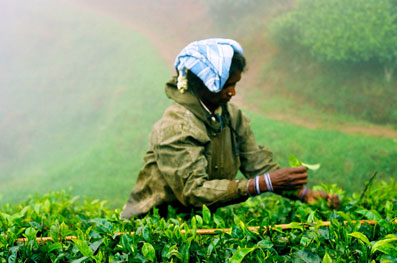A brief history of tea… in Sri Lanka
This island, formerly known as Ceylonand renamed Sri Lanka in 1972, has produced tea since the late nineteenth century.

It is currently the fourth largest producer in the world, with around 300,000 tonnes per year. Tea cultivation was established here by the British as an alternative crop to coffee.
Indeed, the collapse of coffee prices in the 1850s, combined with the adverse effects of a parasite (hemileia vastatrix) forced the English planters to focus on a different product. Tea was perfect to acclimatise to the high plateaus in the central-south part of the island. Thus, in around twenty years, tea growing overtook coffee production.
Where does our tea come from?
There are 3 plantation altitudes which affect the taste of the tea:
- low-grownteas, at an altitude of 0 to 600 m
- medium-grown teas,from 600 to 1300 m
- high-grown teas, located above 1300 m
High-grown teas are known to be aromatic and appear light coloured in the cup, whereas medium-grown and low-grown teas are fuller-bodied and darker in colour.
The fineness of the harvest is also important. In Sri Lanka, most teas are OP grade (the abbreviation for Orange Pekoe), that is to say, containing full leaves of medium calibre. When a "B" slips into this grade, it means that the leaf has been deliberately broken ("B" is the abbreviation for Broken).
A Breakfast B.O.P., for example, consists of broken leaves to give a strong and very colourful cup of tea which awakens the palate and works well with a drop of milk. In contrast, a Ceylon afternoon tea will contain whole OP grade leaves and be softer, more aromatic, but still robust enough to withstand a drop of milk.


